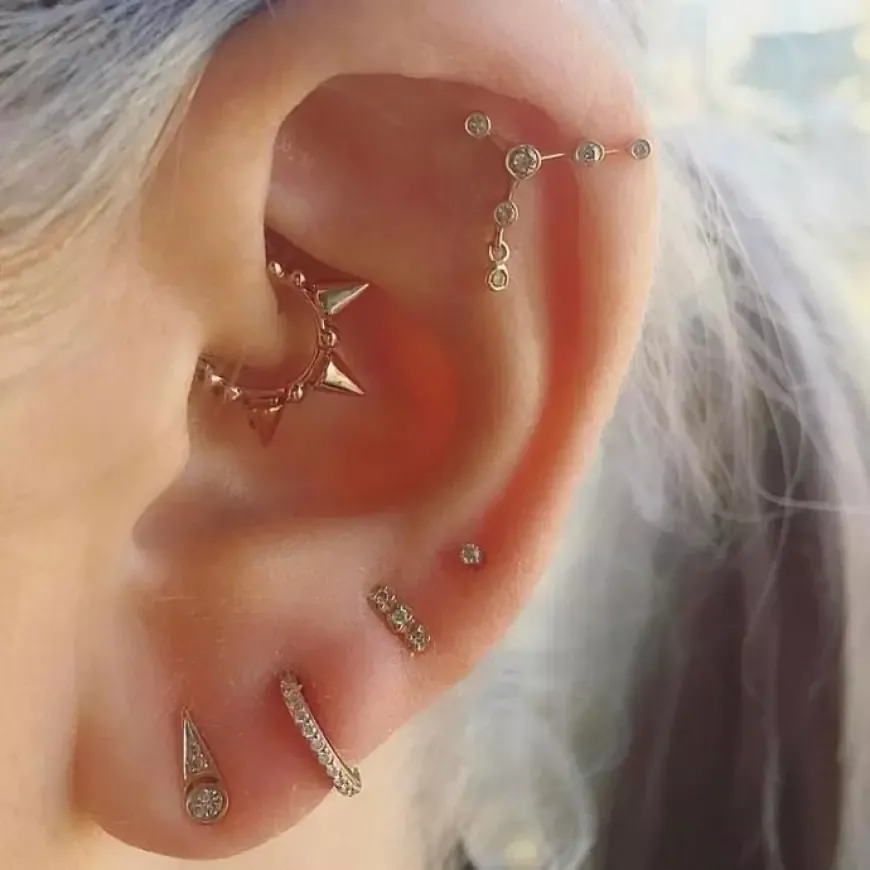Ear Piercing Aftercare: Keeping Your New Piercing Safe

Getting a new ear piercing is an exciting step in expressing your style, but it comes with the responsibility of proper aftercare. Just like any body modification, ear piercings need careful attention to ensure they heal well and stay infection-free. Whether you're a first-timer or adding another earring to your collection, following the right aftercare steps can help prevent complications and ensure your piercing heals perfectly.
In this guide, we’ll walk you through everything you need to know about Ear Piercing Dubai aftercare—from the immediate steps you need to take right after getting your piercing to long-term maintenance tips. Read on to discover the best practices for keeping your new ear piercing safe and healthy.
Why Is Ear Piercing Aftercare Important?
Proper aftercare is crucial because your ear piercing is essentially an open wound that needs time to heal. Without the right care, you risk infection, irritation, and slow healing, which could lead to complications like keloids, scarring, or even piercing rejection. By following the recommended aftercare routine, you can help your piercing heal faster, avoid pain, and reduce the risk of unwanted issues.
The Ear Piercing Healing Process
Before diving into the aftercare tips, it's important to understand the healing timeline of an ear piercing:
- Initial Healing: This typically takes 6-8 weeks for cartilage piercings and 4-6 weeks for lobe piercings.
- Full Healing: Complete healing can take several months to even a year, depending on the type of piercing.
During the healing process, it’s normal to experience mild swelling, redness, or tenderness. However, any severe pain, discharge, or unusual symptoms may indicate an infection, and you should seek guidance from a professional.
Ear Piercing Aftercare Tips
1. Clean Your Piercing Regularly
One of the most important steps in ear piercing aftercare is cleaning your piercing daily to prevent bacteria buildup. Use a saline solution or an antiseptic solution (preferably alcohol-free) to gently clean around the piercing. Here’s how you can clean your piercing properly:
- Wash your hands thoroughly before touching the piercing.
- Use a cotton swab or gauze soaked in saline solution to clean around the piercing hole.
- Avoid using alcohol, hydrogen peroxide, or harsh chemicals, as these can dry out the piercing and cause irritation.
2. Avoid Touching the Piercing
The more you touch your piercing, the higher the chance of transferring bacteria or causing irritation. Touching your piercing with unwashed hands can lead to infections, so try to avoid unnecessary contact. If you must touch your piercing, always wash your hands beforehand.
3. Keep the Piercing Dry
After cleaning, make sure to dry the piercing gently with a clean tissue or towel. Avoid using a blow dryer, as hot air can cause irritation. Keeping your piercing dry is essential to prevent bacteria growth and inflammation.
4. Sleep on the Opposite Side
While your piercing heals, try to avoid sleeping on the side with the new piercing. Pressing your piercing against the pillow can cause irritation and pressure, slowing down the healing process. Use a travel pillow or sleep on your back to keep the pressure off the piercing.
5. Avoid Swimming in Pools or Hot Tubs
For the first few weeks, it's important to avoid exposing your piercing to dirty water, like in swimming pools, lakes, or hot tubs. These environments contain bacteria that can increase the risk of infection. If you must swim, cover the piercing with a waterproof bandage or avoid submerging your head.
6. Avoid Using Hair Products on the Piercing
Hair sprays, gels, and other styling products can irritate a new piercing. Keep these products away from your piercing during the healing process. If any product gets on your piercing, clean it with saline solution immediately.
7. Be Careful with Jewelry
While your piercing is healing, it's crucial to wear the right jewelry. Choose hypoallergenic materials, such as titanium, surgical steel, or gold, to prevent allergic reactions. Avoid changing the jewelry too early, as this can disrupt the healing process and increase the risk of infection.
8. Watch for Signs of Infection
While rare, infections can occur. Keep an eye out for symptoms such as:
- Excessive redness
- Unusual pain or throbbing
- Green, yellow, or foul-smelling discharge
- Swelling or warmth around the piercing
If you notice any of these signs, seek advice from a professional piercing expert or a healthcare provider.
The Benefits of Proper Aftercare
Proper Ear Piercing in Dubai aftercare has many benefits beyond just keeping your piercing safe:
- Faster Healing: With the right care, your piercing will heal faster, reducing discomfort and risk of complications.
- Prevents Infection: Regular cleaning and avoiding irritating factors will help you prevent infections, which are one of the most common complications after getting a piercing.
- Long-Term Safety: Following the aftercare guidelines ensures that your piercing remains healthy in the long run, with minimal scarring and no issues like piercing rejection.
Things to Avoid During the Healing Period
- Using Harsh Chemicals: Avoid using alcohol, hydrogen peroxide, or strong antiseptics as they can irritate your skin and slow healing.
- Changing Jewelry Too Soon: Wait until your piercing has fully healed before switching out the jewelry to avoid irritation or injury.
- Rubbing or Twisting: Don’t twist or turn your earring while it’s healing, as this can cause trauma to the tissue and delay the healing process.
Conclusion
Caring for your new ear piercing is essential to ensure it heals properly and stays infection-free. By following these aftercare tips, you can enjoy your new piercing without unnecessary complications. Remember, patience is key—healing takes time, and proper care will help you achieve the best results. If you have any concerns or unusual symptoms, don’t hesitate to reach out to a professional for guidance.
What's Your Reaction?
 Like
0
Like
0
 Dislike
0
Dislike
0
 Love
0
Love
0
 Funny
0
Funny
0
 Angry
0
Angry
0
 Sad
0
Sad
0
 Wow
0
Wow
0














































